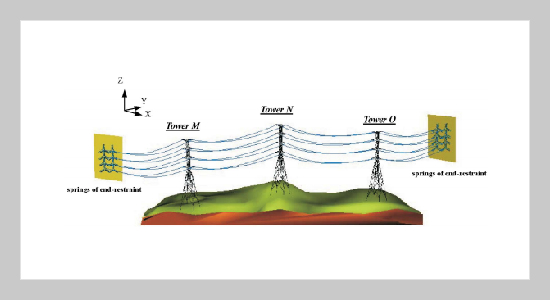Ying-Hui Lei This email address is being protected from spambots. You need JavaScript enabled to view it.1 and Yu-Lin Chien1 1Department of Civil Engineering, Tamkang University, Tamsui, Taiwan 251, R.O.C.
Received:
August 19, 2004
Accepted:
November 5, 2004
Publication Date:
March 1, 2005
Download Citation:
||https://doi.org/10.6180/jase.2005.8.1.05
In this paper, the dynamic behavior of a group of transmission towers linked together through electrical wires and subjected to a strong ground motion will be investigated in detail. In performing the seismic analysis, the wires and the towers concerned are modeled, respectively, by using the efficient cable elements and the 3-D beam elements considering both geometric and material nonlinearities. In addition, to enhance the practical usage of the analytical scheme, the strength capacities and the fracture occurrences for the main members of the transmission tower will be examined with the employment of the appropriate strength interaction equations. It is expected that by aid of this investigation, those who are engaged in code constitution or practical designing of transmission towers may gain a better insight into the roles played by the interaction force between towers and wires and by the configuration of the transmission towers under strong earthquake.ABSTRACT
Keywords:
Transmission Towers, Geometric and Material Nonlinearities
REFERENCES
















